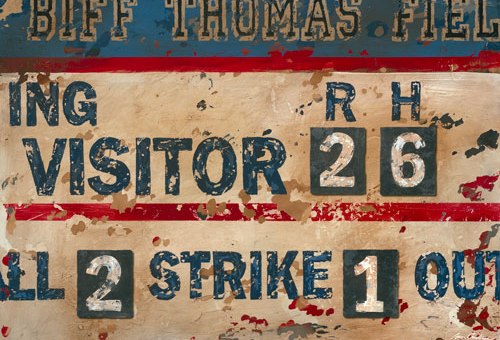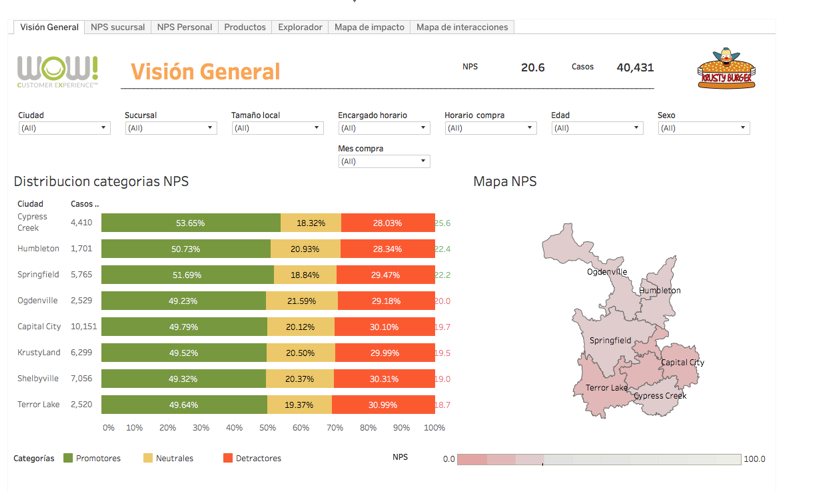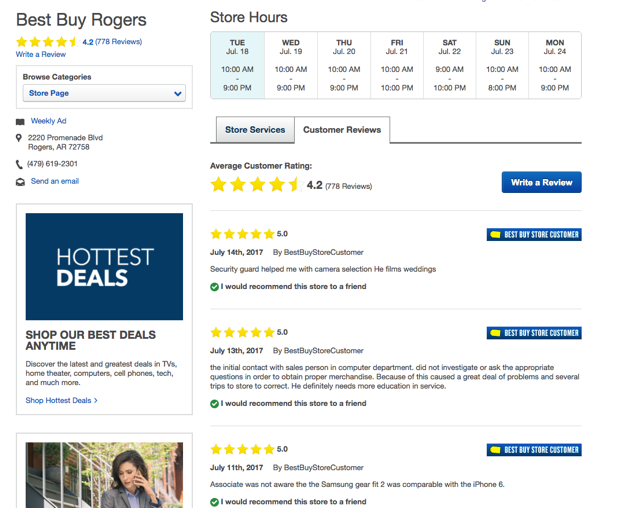Probably the biggest under-acknowledged challenge in launching a new CX initiative is engaging front line employees. Real time data collection is pointless if only an exclusive group of technocrats in HQ can see the results. We can’t start to think about action if the front line does not have, understand, or feel the information is meaningful to them. But how do we get the word out?
Dashboards
Dashboarding has become very popular of communicating complex data simply. Companies such as Tableau, Domo, mTAB, and Dapresy have some very impressive dashboarding tools. These can be assembled quickly and inexpensively. Here is a nice interactive example in Tableau Public of a fairly comprehensive dashboard designed by Gustavo Alberto for the fictitious Krusty Burger chain, albeit in Español.
Most CFM providers have a configurable dashboarding component as well. The fact that most of these tools are also mobile enabled helps field engagement with the information as well.
However, even dashboarding can be asking a bit much for the busy frontline worker. The average working joe or jane who is out in the parking lot, behind the register, or in the call center really might not have the time, interest, or know-how to consult their NPS dashboard to see how well they are doing. How can they find out?
Making CX Public
We know that engaging the front line can make or break the success of a CX initiative. They are the intersection between the brand and the customer in most instances. How do we make them aware of what is going on?
The answer may be simple. Why not go public with CX results? Let’s put our report card on a very public refrigerator for the world to see.
This accomplishes a number of goals. First, it puts CX attitudinal and behavioral metrics right under the nose of the very people who can make a difference. Most motivation theories such as Expectancy Theory and Job Characteristic Model hold that feedback is very important in improving performance. It also makes a good deal of sense. How do I know if I am improving if you don’t tell me on a regular basis?
Second, for customers it provides a degree of transparency about the performance of that location and gives them assurances that this is a good place to shop. The fact that a store isn’t perfect is not seen as a negative any more than your credit score or your score on the vintage Donkey Kong machine in your local pizza parlor. A “Not Perfect” provides motivation for those in the store and creates a sense of trust with the customer that the books are not, in fact, cooked.
In Store Public Displays
Many companies have taken this to heart. This example shows Weis Grocery store displaying their CX efforts in a low-tech but effective manner.
Here we see some challenges in the Produce and Seafood departments but some recent victories in Bakery, Deli, and Pharmacy. This information is posted right in the front of the store for all to see. To associates it is a constant reminder of what still needs to get done and to customers it says we are serious about customer experience and are always striving to improve.
The other nice feature of this simple approach is it involves everyone. Ostensibly the GM and/or department heads are physically updating their scores and changes on a regular basis. As a result, I would imagine the employees in the department discuss regularly and are attuned to those scores. Finally, customers see it every time they shop. In short, it engages all stakeholders where it matters; on the front line.
This second example comes from the London Midlands Railway in the central Britain. This is posted right at the station, not hidden away in some corner of the station, but right next to the ticket counter.
You can see here they display operational data (e.g., on-time performance), along with the trend. Right next to that information you can see how they handle the human side of the business with information about information provided and “staff attitude”. A very nice summary of all results can be found online here as well.
Online Public Displays
Publicly displayed information about Customer Experience need not be relegated to physical locations. While digital reviews are fairly ubiquitous not everyone has the fortitude to let all reviews get posted unfettered. In some cases, corporate sponsored CX metrics systems either cherry pick reviews or filter out the bad ones. This practice, however, has consequences. The biggest of which that consumers will stop believing them if they appear to be tampered with.
Here is a nice example from Best Buy that lets the CX cards fall where they may. You can see that the reviews are verified (they have to be purchasers). If you were to scroll down you would see many that are not so stellar.
This level of transparency not only helps customers make a good choice, it allows for self-policing of CX so long as it does not degenerate in a quid pro quo economy where there are favors (i.e., incentives) traded for good reviews. That is a topic for a whole different post.
Many others, particularly in hospitality, have adopted a similar approach, thus creating a natural selection system for CX. While some ratings site have been criticized by having reviews suppressed and others have been accused of not being vigilant enough in preventing fake reviews, other companies like SureCritic Reputation.com, and others act as intermediary of reviews that seek out to post the good, the bad, and the ugly.
Driving Engagement and Trust
We live in a time of information transparency. It is expected by customers and integral to consumer decision making. A recent report by Deloitte found that almost 80 percent of consumers have interacted with brands before they even set foot in-store.
While CX information is important for consumer decision making, it also has a large role in driving both employee and customer engagement. Those dashboards and reports sitting back in HQ do little to get buy-in from the field. The private curation of data is seen as Big Brother paternalistically trying to keep tabs on regions and outlets that clearly cannot be trusted.
You can start to turn the cultural ship a bit by democratizing the data. Push CX and operational data down to the lowest level and get the front line’s buy in. If it’s under everyone’s nose every day and they feel like they have some part in influencing it, it will help drive behavior.
Second, I personally prefer the low-tech version in lieu of, or in addition to, technology based solutions. The grocery example is easy to set up, requires about $29.99 of investment and requires local management and front-line employees to engage in the process versus being passive recipients of data.
Third, make CX simple and embed it into the culture. I know many hotels and retailers start the day by reviewing customer feedback. This a great practice that gets everyone focused on the customer rather than the score. It includes everyone in the solution; and most importantly those who can make the biggest difference.
Finally, the practice of cherry picking, tampering, incentivizing, or modifying customer feedback before it gets to the public domain is a very bad one. People aren’t stupid and will catch on to these shenanigans. It will reduce perceptions of trust and they will, over time, dismiss the information as bogus, transforming an entire feedback mechanism into an enormous waste of everyone’s time and money.
Making it Visible
Getting unvarnished customer experience feedback out in the public, in a simple to understand, and non-punitive fashion will help engagement with employees and also engender trust in customers that you are dedicated to making sure they have a rock star experience. When people have access to the data, believe in it, and understand its impact they will be much more apt to do something about it. And action is the whole reason for any CX initiative
.Note: Thanks to my colleague Dave Ensing for the Best Buy example and Matt Inman for input on this topic.









